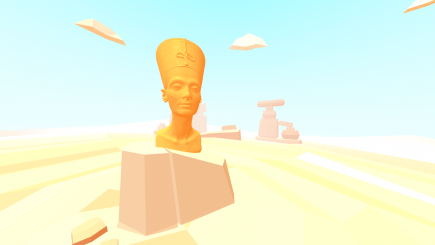After visiting Vizor office I – an aspiring web media student – got struck with a strong sense of uncertainty. Are we actually going to use smartphones in 2020? Is web design going to be collections of arranged boxes of content in the future? What is a browser in a few years?
In a back alley of Helsinki hipster area Kallio, there is group of old friends planning to give internet a new face. When I got to try the demo with guidance from the CEO Antti Jäderholm and COO Anna Rosa Lappalainen, the concept was clear and I was baffled by the potential. Putting the future into words today is difficult though.
I’m are talking about Vizor, who are developing a web-VR experience. They are not making another VR app, but rather putting Virtual Reality content directly in the browser. All you need is a WebVR capable browser and a headset, although you can use Vizor without one. There is no need to download and install large native applications.

I gotta be honest – I have never been this excited after visiting a company before. The philosophy is brave and revolutionary. The service will allow users to navigate and interact on web in unseen ways. When we are liberated from individual screens and transition to visualized content in 3D, it resets design standards and opens new possibilities regarding user interfaces and web design.
The service is not yet ready for the average user, but for a power user I believe Vizor.io might well be the next big thing. So far the team has developed three basic functions with the goal to change the way we interact and see internet.
The backside service is built on a graphical user interface, a large selection of boxes – functions connected to each-other, all interconnected. The concept is done by Javascript and Web-GL – languages aimed for web.
The three founders and additional three members of the team started off with this crazy idea in 2011, and came out three years later after the release of the Web-VR API. In January 2015, they went out to get funding and managed to raise 350,000 from Sisu Game Ventures, Lifeline Ventures and angel investors. Later Tekes granted some additional funding boosting the capital to 450,000 euros in total.





